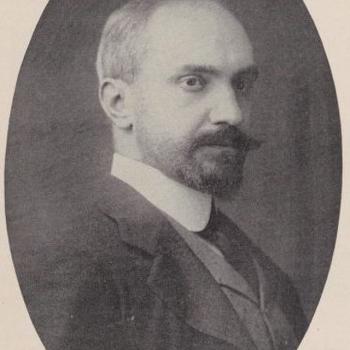This is the second post in the series on mindful presence. You can view Part One here.
So why should we go out of our way to develop mindfulness?
Mindful presence feels good in its own right: relaxed, alert, and peaceful. Not contending with anything. No struggle.
In addition to the inherent, experiential rewards of mindful presence, studies have shown that it lowers stress, makes discomfort and pain more bearable, reduces depression, and increases self-knowledge and self-acceptance.
To quote the father of American psychology, William James: “The faculty of voluntarily bringing back a wandering attention, over and over again, is the very root of judgment, character, and will. No one is compos sui [master of himself] if he have it not. An education which should improve this faculty would be the education par excellence. But it is easier to define this ideal than to give practical directions for bringing it about.”
William James, Psychology: Briefer Course, p. 424 (Harper Torchbooks, 1961)
At a deeper level, mindful presence is the counter to our habitual state of mind, which a Thai meditation master once summarized as, “Lost in thought.”
To quote Jack Kornfield: “ . . . you [become] mindful of the constantly changing conditions of sight, sound, taste, smell, physical perceptions, feelings, and thoughts. Through mindfulness practice, you [begin] to experience how conditioned the world is and how these conditions constantly change.
To free ourselves, we need to quiet the mind through some mindfulness in meditation. Then, instead of identifying with the changing conditions, we learn to release them and turn toward consciousness itself, to rest in the knowing. Ajahn Chah called this pure awareness, “the original mind,” and resting in “the one who knows.”
The senses and the world are always changing conditions, but that which knows is unconditioned. With practice . . . we can be in the midst of an experience, being upset or angry or caught by some problem, and then step back from it and rest in pure awareness. . . We learn to trust pure awareness itself.”
Jack Kornfield, Buddhadharma, Summer 2007, pp. 34-35
And in addition to the psychological, everyday benefits of mindful presence, it is also, in Buddhism, considered to be a direct path to enlightenment and the end of suffering:
“This is the one-way path for the purification of beings, for the surmounting of sorrow and lamentations, for the passing away of pain and dejection, for the attainment of the true way, for the realization of Nibbana – namely, the four establishments of mindfulness.
What are the four? A person dwells contemplating the body in the body, ardent, clearly comprehending, and mindful, having subdued longing and dejection in regard to the world. He or she dwells contemplating feelings in feelings, ardent, clearly comprehending, mindful, having subdued longing and dejection in regard to the world. He or she dwells contemplating mind in mind, ardent, clearly comprehending, mindful, having subdued longing and dejection in regard to the world. He or she dwells contemplating phenomena in phenomena, ardent, clearly comprehending, mindful, having subdued longing and dejection in regard to the world.”
[In the Buddha’s Words., p. 281]
This isn’t the place to get into detail about that quote, though I invite you to let the feeling of it carry you along. But in passing, it is worth noting that “contemplating body in the body” (or feelings in feelings, mind in mind, phenomena in phenomena) means being simply aware of immediate, experiential phenomena as they are without conceptualization or commentary. Just the sensations of the rising breath in the belly. Just the subtle feeling of a sound being mildly unpleasant. Just the sense of consciousness being contracted or spacious. Just a single thought emerging and then disappearing. Just this moment. Just this.
There’s a pithy summary of this simplicity of pure experiencing in the advice the Buddha gave to a man named Bahiya:
“Bahiya, you should train yourself in this way: With the seen, there will be just the seen; with the heard, there will be just the heard; with the sensed (touched, tasted, smelt) there will be just the sensed; with the cognized [thoughts, feelings, etc.], there will be just the cognized.”
In sum, imagine being in a lovely and peaceful meadow, with a train full of thoughts and feelings and desires rolling by in the distance . . . Normally, as this train approaches we tend to become drawn in, and we hop on board and get carried away . . . “lost in thought.”
On the other hand, mindfulness allows you to see the train coming but have the presence of mind . . . to stay in the meadow! And whenever you get swept along by the train, as soon as you notice that, whoosh, you return immediately to the peaceful meadow, to the refuge of mindfulness.
The post Why Develop Mindful Presence? appeared first on Dr. Rick Hanson.















